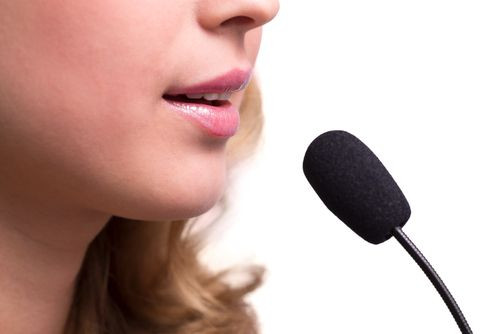How Attractive Is A Voice? Men And Women Agree When Rating Vocal Attractiveness And ‘Typical’ Wins

What’s in a voice? Apparently everything, though most especially your ability to attract other people. Past studies have found that facial and vocal attractiveness are linked and the allure of a voice is important to mate selection as well as "nocturnal copulation," in the expressive words of science. Research even offers evidence that women prefer deeper, more masculine-sounding voices during the fertile phases of their menstrual cycles. In a recent study conducted at the University of British Columbia, researchers discovered that listeners generally agreed which voices, male and female, were more attractive. “Our study expands on previous findings by demonstrating that acoustic-phonetic features relating to sexual dimorphism, apparent health and youthfulness, and community-based typicality collectively contribute to listeners’ perception of vocal attractiveness,” wrote the authors in their study, which appears in PLoS One.
Talkers and Listeners
Wanting to explore a variety of voice features and to see how listeners rated their attractiveness, the researchers set up an experiment where 30 male voices and 30 female voices were recorded reading the following 15 words: boot, dune, hoop, toot, zoo, deed, key, peel, teal, weave, cot, pod, sock, sod, and tot. These words were chosen for their vowel sounds and the duration with which an individual speaker will characteristically choose to enunciate them. (All the talkers were from regions in the West, with a majority from California.) Then, 30 native Californians, an equal number of men and women, listened to the voices and rated them. Participants could only respond after hearing each recorded voice read every single word in the list. They were allowed an unlimited time to respond, though they were given no instructions as to how they would rate the "attractiveness" of a voice. The order of the voices were randomly arranged for each participant.
So what did the researchers discover?
Men and women largely agree when rating the attractiveness of a given voice. “While the agreement is nearly one-to-one for female voices, males are reluctant to give fellow male voice high attractiveness ratings,” wrote the authors. Which traits predicted attractiveness judgments? Generally, those traits that emphasized sexual differences were rated more attractive: lower voices for men, higher for women; men with a shorter average word length, women with a longer average word length. Generally, female voices with a breathier quality were rated more attractive. Some traits were found attractive for both sexes: apparent health and youthfulness and “typicality” of community — in other words, the participants, all Cali natives, preferred the voices most typically Californian.
The researchers hope to continue researching the matter in order to understand which vocal traits, if any, are “truly culturally universal.” “These findings further reinforce that features of voices that indicate whether a talker is a typical male or female contribute to attractiveness ratings,” concluded the authors. For those who don't count themselves among the "typical," all is not lost according to Babel, who theorizes that the exotic may also have an appeal. "Once you are outside of a certain range of familiarity, novel and exotic sounding voices might become more attractive," she said in a press release. She added some accents might be preferable to others due to the stereotypes associated with them.
Source: Babel M, McGuire G, King J. Towards a more nuanced view of vocal attractiveness. PLoS One. 2014.
Published by Medicaldaily.com



























